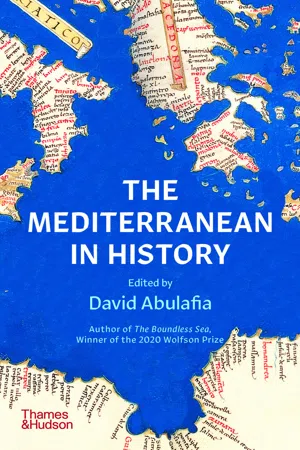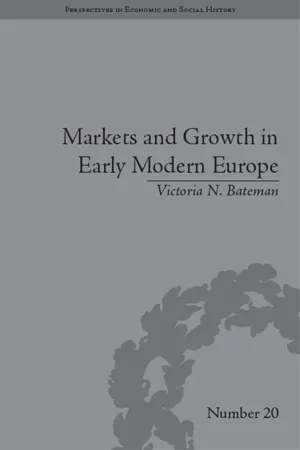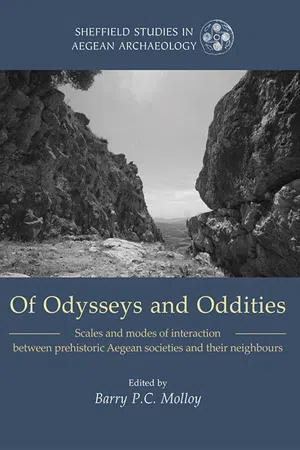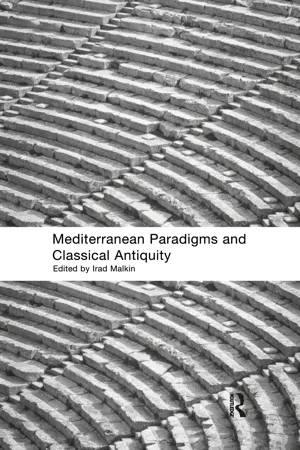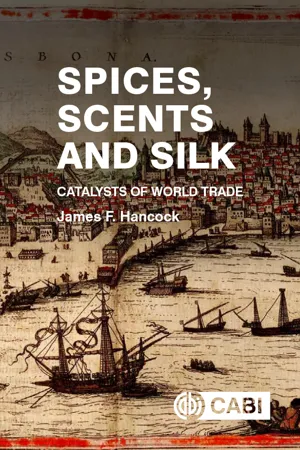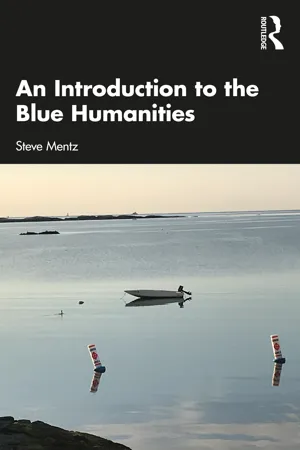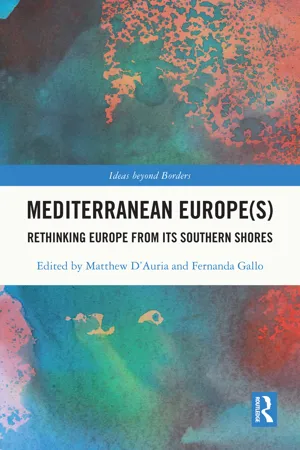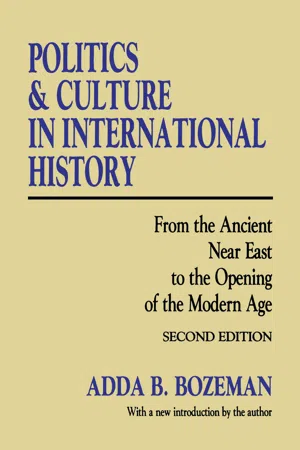History
Mediterranean Sea Trade
The Mediterranean Sea trade refers to the exchange of goods, ideas, and cultures among the civilizations bordering the Mediterranean Sea. This trade network facilitated the movement of commodities such as olive oil, wine, grains, and textiles, as well as the spread of knowledge and technologies. It played a crucial role in the economic and cultural development of ancient civilizations such as the Greeks, Romans, and Phoenicians.
Written by Perlego with AI-assistance
Related key terms
Related key terms
1 of 4
Related key terms
1 of 3
9 Key excerpts on "Mediterranean Sea Trade"
- eBook - ePub
- David Abulafia(Author)
- 2021(Publication Date)
- Thames and Hudson Ltd(Publisher)
But there are other examples which have a more direct bearing on the history of the Mediterranean Sea, because these other ‘Mediterraneans’ had important commercial and cultural links with the classic Mediterranean. A distinguished historian of the medieval Mediterranean, Roberto Lopez, wrote (somewhat confusingly) of the Baltic and North Sea as the ‘northern Mediterranean’ where similar commercial developments took place to those visible in the classic Mediterranean; Viking and Frisian merchants played the role of the early Amalfitans and Venetians in the Mediterranean (within the period of John Pryor’s chapter in this book), while the great trading confederation known as the German Hansa shows some parallels with the operations of the Genoese, Catalan and Venetian merchants of the late medieval Mediterranean, though it was rather more united than the Italian merchants ever became. This Mediterranean of the North interacted with the Mediterranean of the South by way of the trade routes that led from Bruges to the Mediterranean Sea, overland or (after the 1270s) by sea past Gibraltar. Not just trade goods such as furs and amber went south, and spices came north: so did ideas and techniques of the most varied sort, such as the methods and iconography of Flemish painters or the new ideas of antiquity favoured by Renaissance scholars; possibly too the type of heavy ship known as the cog was copied by Mediterranean navigators from northern ships that entered the Mediterranean. And, as has been seen, the Black Sea is both an extension out of the classic Mediterranean and a small Mediterranean in its own right, linking the contrasting shores of Europe and central Asia.These ‘Mediterraneans’ do not need to contain water: the Sahara Desert is another Mediterranean that interacted closely with the classic Mediterranean, criss-crossed by caravans consisting of ships of the desert, dromedary camels, taking gold from Black Africa to the shores of the Maghrib, trudging from oasis to oasis just as ships might hop from island to island. Thus Mediterraneans become the theatre for cross-cultural trade and for the exchange of ideas and populations, a subject examined comparatively by the American world historian Philip Curtin. Again, this multiplication of the Mediterranean, though intellectually stimulating, is not the theme of this book.Another approach to the Mediterranean can be found in the contributions to a journal called al-Masāq: Islam and the Medieval Mediterranean , founded by an indefatigable scholar originally from Malta, Dionisius Agius, who also set up a Centre of Mediterranean Studies at the University of Leeds in the north of England. This journal is a genuinely innovative one, which seeks to cross the Christian–Islamic divide in the medieval Mediterranean, often examining commercial and religious contacts from the perspective of the Muslim presence in the Mediterranean. With al-Masāq we seem to be coming nearer to a history of the Mediterranean which is about interactions, rather than about an infinite number of localities: about the meeting of cultures in Norman Sicily or Muslim Spain, about Venetian merchants in Islamic lands, and so on. But the idea of an infinite number of localities also has its appeal: two British historians, Peregrine Horden and Nicholas Purcell, have suggested that the localities themselves are very much part of the history of Mediterranean interactions. It is to their view, presented in a massive volume called The Corrupting Sea - eBook - ePub
- Victoria N Bateman(Author)
- 2015(Publication Date)
- Routledge(Publisher)
8 From here they were taken to all parts of Europe, as Venetian merchants searched for markets in which to sell their exotic luxuries and valuable products that could be used as return cargo, completing the circle of east–west trade. From as early as the thirteenth century, following developments in Genoese shipping, Italian ships carrying Mediterranean and Eastern goods were regularly traversing north-western Europe. These trading connections were, for the time being at least, firmly in the hands of Italian merchants.Altogether, it therefore seems accurate to depict the Mediterranean Sea at the onset of the early modern period as a rather lively place housing ‘an integrated and expansive network of production and trade’.9 However, we know that over the course of the early modern era, two major developments from outside the Mediterranean seriously reshaped the trading life of the region. The first involved the Portuguese and Dutch explorations in the East, along the Cape of Good Hope and up into the Indian Ocean. The second came in the form of increasing trade in the Atlantic and growing competition from Atlantic powers. This included the arrival of northern ships laden with Baltic grain and northern European manufactured goods, supposedly ‘invading’ Mediterranean markets, reaching as far as the traditionally Italian domain of the Levant.10 From as early as 1511, the English successfully established regular trading relations with Leghorn, Sicily, Crete and Cyprus,11 selling cloth and tin, and they were not the only ones. In 1593, out of a total of 219 ships which arrived at Leghorn, of which 73 brought grain from the north, 34 belonged to Hanseatic towns, 12 to the Dutch, 7 to England, 4 to Belgium, 2 to Norway and 1 to Riga.12 However, the Hanseatic market share soon declined, leaving the French, English and Dutch. In 1581 the (English) Levant Company received its charter with the Turks.13 By 1597 the Dutch had reached Syria, and under the French flag traded with Turkish ports, gaining independent trading rights with the Ottomans in 1612.14 - eBook - ePub
Of Odysseys and Oddities
Scales and Modes of Interaction Between Prehistoric Aegean Societies and their Neighbours
- Barry Molloy(Author)
- 2016(Publication Date)
- Oxbow Books(Publisher)
Chapter 2 An Elite-Infested Sea: Interaction and Change in Mediterranean Paradigms Borja Legarra Herrero A distinct Mediterranean For archaeologists and historians, the Mediterranean world has been always inherently linked with ideas of human interaction (Braudel 1949; Horden and Purcell 2000; Abulafia, 2011; Broodbank 2013). The region presents a unique configuration in which the relatively calm waters of a closed sea connect the diverse histories of three continents. The stark differences of the lands around this sea, taken together with a very special kind of maritime ‘glue’ that allows for relatively easier connections than are possible by land travel alone, present a rare laboratory in human history to analyse how people, material and ideas move, meet and mix. While ideas of ex Oriente lux among early 20th century scholars have already indicated the importance of the Mediterranean as a corridor for ideas and people to move, it was of course Braudel who presented a compelling case for approaching the Mediterranean as a context defined by its high connectivity (Braudel 1949). Braudel conveys the idea that interaction is a primary characteristic of the Mediterranean, as it transcends every single level of human experience in the region. The Mediterranean is not just about long journeys by the Phoenicians, or the Roman grain trade, but about the every-day experience of connectivity on every scale: the peddlers that move around using cabotage techniques, the products that reach local markets, the ideas that travel along with such mechanisms. The Mediterranean is a meshwork of movement at every social and geographical scale, and with an intensity difficult to match anywhere else. Horden and Purcell’s The Corrupting Sea (Horden and Purcell 2000) has inspired a new generation of archaeologists and ancient historians to re-examine the Braudelian paradigm - eBook - ePub
- Irad Malkin(Author)
- 2013(Publication Date)
- Routledge(Publisher)
58Mobility, connectivity, and decentring have histories. For the mercenaries of archaic Greece or the merchants of medieval Cairo, the Mediterranean may have been very open, but in other times and places large institutions and stable structures mattered more. Horden and Purcell insist that they are not writing empires and fixed routes out of the story,59 yet one of the longest empirical sections of The Corrupting Sea does in fact try to show that traditional models of an early medieval decline in connectedness are flawed.60The new model addresses some of the old one's anomalies, but this formulation gives up too much. It was already obvious to Polybius (1.3) that some periods of Mediterranean history were more Mediterraneanized than others, and we should preserve this insight. We might begin a fuller account of Mediterraneanization with the slow expansion of palace/temple-type civilizations of Early Dynastic Sumer and Old Kingdom Egypt around 3000 BCE. Around their fringes similar social formations developed, either through emulation or through attempts to resist expansion. Similar processes began in other parts of the Mediterranean, particularly Malta and southeastern Spain, but always faltered. Had these independent moves towards complexity succeeded, the second-millennium Mediterranean might have looked very different, but for local ecological and cultural reasons they did not. By 2000, Bronze Age states with many similarities had spread as far as Syria, Crete, and Elam, and Ur had united most of Mesopotamia. The fall of Ur did not disrupt the larger process, and by 1500 states of this type were firmly planted in Anatolia and the Aegean. Aegean goods reached the Adriatic, the western Mediterranean, and even central Europe. There was, perhaps, an inexorable expansionist logic in this Bronze Age social formation. Given time, it might have spread around the entire Mediterranean. But instead destructions about 1200 brought contraction and ended Near Eastern-style palatial civilization in Anatolia and the Aegean. When expansion began again shortly before 900, things were very different. The Assyrians started a trend towards larger and more militaristic empires in the Near East, while the city-states of the Aegean generally rejected monarchy and religiously based authority. Phoenicians and Greeks accelerated commercial contact between the eastern and the western Mediterranean and by 750 were creating permanent settlements in the west. This archaic Mediterraneanization was another turning point, tying the basin together as never before. Meanwhile, a succession of Near Eastern empires took over the eastern Mediterranean coastline, and Persia became a major power on the Sea. Alexander destroyed this empire, and this led to partial Graeco-Macedonian élite replacement and substantial emigration from the Aegean. While this was going on, city-states similar to the Greek and perhaps the Phoenician model flourished in Italy, southern France, and Spain. Rome carved out its own empire, and Carthage, a Phoenician colony, grewrich on trade. Integration was steady and strong between 700 and 300, perhaps unstoppable barring a shock to the system as profound as the one around 1200. Absent such a shock, Rome overcame all rivals, uniting the basin politically in the second and first centuries BCE. By 200 CE Rome provided a security system that affected economics, society, and culture in the Mediterranean, the Near East, and temperate Europe.61 - eBook - ePub
Spices, Scents and Silk
Catalysts of World Trade
- James Hancock(Author)
- 2021(Publication Date)
- CAB International(Publisher)
4 Ancient Mediterranean Trade Links Setting the Stage – Early Egyptian–Levantine TradeThe dynastic kingdoms of ancient Egypt were in early contact with the eastern Mediterranean coast, as evidenced by jars, flasks and pitchers from Syria and Palestine being found in the tombs of Egyptian pharaohs as far back as 3500 BCE (Casson, 1991 ; Paine, 2013 ). By the third millennium BCE , sea trade was brisk between Egypt and the Levantine littoral, the eastern shore of the Mediterranean from Palestine to the edge of Anatolia. One of the signature accomplishments of Pharaoh Snefru, ruler of Egypt in 2600 BCE , was the import of cedar logs from Gebal (later Greek Byblos) in today’s Lebanon. A scribe of his left the first written record of Mediterranean Sea Trade in hieroglyphics on the Palermo Stone, in what Casson (1991, p. 6) calls ‘the world’s first articulate record of large scale overseas commerce’. The scribe relates how ‘a fleet of 40 ships slipped their moorings, sailed out of a Phoenician harbor, and shaped a course for Egypt to bring there a shipment of Lebanese cedar’.Byblos may be the oldest city in the world, having been inhabited for over 7000 years (Paine, 2013 ). By 3000 BCE this city had ‘become the single most important shipping port for timber to Egypt and elsewhere’ (Mark, 2009 ). Byblos grew vastly wealthy from trade with the Egyptians. It was here that shipbuilding was first perfected, and the Phoenicians became the ‘princes of the sea’, as referred to in Ezekiel. Through Byblos and other Levantine trading centres, Egypt became well connected to the civilized world beyond, including Mesopotamia and the Aegean littoral.The peak of Egyptian–Syrian trade occurred during the reign of Thutmose III (1481–1425 BCE ). Casson (1991, p. 15) - eBook - ePub
- Steve Mentz(Author)
- 2023(Publication Date)
- Routledge(Publisher)
6 Surrounded by Land Mediterranean Examples DOI: 10.4324/9781003166665-6 In The Boundless Sea (2019), his massive history of all the world’s oceans, the distinguished Oxford historian of the Mediterranean David Abulafia describes the Indian Ocean as being a “middle ocean” that resembles the landlocked Mediterranean on a larger scale. Exploring the coastal fringes and trading networks that define the Indian Ocean world, Abulafia suggests that many historians have characterized “the Indian Ocean as a sort of Mediterranean, a sea defined by its edges, even if there is no southern edge” (46). Moving from the massive scale of the Indian Ocean, roughly 27 million square miles or more than 70 million square kilometers, to the smaller Mediterranean, which spans just under one million square miles or 2.5 million square kilometers, requires a narrower focus. In Western scholarship, however, the Mediterranean has always had an outsized place. Home to classical Greek culture, the Roman Empire, and religious centers from Rome to Jerusalem to Mecca, the Mediterranean represents many different cultural sources and origins. The maritime habits and structures that developed in this smaller basin would be exported during Europe’s early modern surge of colonialism and imperial expansion. For environmental historians, also, the pioneering example of Fernand Braudel’s Mediterranean and the Mediterranean World in the Age of Philip II, first published in French in 1949, looms large. An influential example of what would become known as the Annales School of historiography, Braudel’s attention to the long durée and to how environmental forces and structures shape human history remains influential in many discourses of environmental history - Gerald Blake(Author)
- 2018(Publication Date)
- Routledge(Publisher)
Chapter 13 MARITIME BOUNDARIES IN THE MEDITERRANEAN: ASPECTS OF COOPERATION AND DISPUTE Nurit KliotThe Mediterranean Sea is a semi-enclosed sea with a common heritage of navigation and commerce. The Mediterranean basin is not a homogeneous region: the eighteen Mediterranean states belong to three continents and many of their cultural, political and economic networks lie within these three continents.There is great ethnic, cultural and religious diversity among Mediterranean states and the economic gap between poor and rich countries around the Mediterranean basin is very wide. (1 ) This cultural and economic contrast has led to differential interests and varied policies toward the sea and its resources. Moreover, complex coastal configurations and the presence of islands create geographical and legal problems for boundary delimitation. (2 ) The task of drawing maritime boundaries in the Mediterranean has also been made difficult by British ownership of Gibraltar and the British bases of Cyprus, and by the Spanish ownership of Ceuta and Melilla in North Africa. There are longstanding disputes over maritime and territorial issues involving Greece and Turkey, Spain and the United Kingdom, Spain and Morocco and Israel and its Arab neighbours. Thus, both geographical and political circumstances make agreement on maritime boundaries difficult.States which have the necessary strength to defend their claims, may claim rights over the adjacent seas, for a variety of purposes, and for differing distances. For coastal states there are five commonly recognised zones: internal waters, territorial waters or seas, contiguous zones, and continental shelf. The need to draw an international maritime boundary arises and the process of boundary formation normally begins when two states make claims to waters or parts of the seabed which overlap. Agreement on the boundary may be achieved through unilateral or bilateral action and sometimes the parties will need arbitration.- eBook - ePub
Mediterranean Europe(s)
Rethinking Europe from its Southern Shores
- Matthew D'Auria, Fernanda Gallo, Matthew D'Auria, Fernanda Gallo(Authors)
- 2022(Publication Date)
- Routledge(Publisher)
65Nostalgic Notions for a Sea of Nations
That France has been the leader in forging the Mediterranean discourse did not hinder other nations from making of the ‘Mediterranean World’ a piece of evidence for their own existence anointed by history. In various ways, the Mediterranean was one of the most powerful European toolkits for national self-legitimisation, precisely because it has been accorded such a central role by the European narrative. Being the place ‘where it had all begun’, its remembrance assumed a nostalgic flavour. This holds no less for far-away countries like Finland, which discovered that it had ‘[for] centuries’ looked ‘toward the South, to western and central Europe, but also toward the Mediterranean’.66 After Finland’s independence was won, the nation swiftly invested in research on ancient history and classical archaeology in Rome and other sites of the ‘Mediterranean World’ to document its ‘Europeanness’.From the eighteenth century onwards, other European powers besides France claimed that the heritage of antiquity and Christian religion entitled them to have a stake in Mediterranean affairs. The absence of Mediterranean seashores or islands under national control was no hindrance to flamboyant cultural claims, yet it certainly represented an obstacle to geopolitical ambitions. Therefore, the British fleet began seeking and, in some cases, succeeding in strategic territorial conquest. Economic interests were discussed in Parliament with undisguised imperial selfishness, especially when their promotion implied the application of military power. Yet British elite circles did not for that reason renounce a civilisational perspective when seeking to justify their actions. Some writers even tried to construct a poetic Mediterranean mythology around Albion’s heroic enterprises, particularly regarding Gibraltar, a British acquisition not just of strategic but also of symbolic value.67 - eBook - ePub
Politics and Culture in International History
From the Ancient Near East to the Opening of the Modern Age
- Adda B. Bozeman(Author)
- 2017(Publication Date)
- Routledge(Publisher)
The qualities and interests that marked men as merchants were thus derived from a dual set of social references. The Western European regions could not produce professional elites with equivalent characteristics until they, too, had brought forth strong municipalities. When such centers arose in the areas adjoining the Mediterranean Sea, the nations of the West could move toward parity with those of the East. And when Genoa, Pisa, and Marseille had become the equals of Byzantium, Cairo, and Fez, 15 all Mediterranean economies were interlocked through their participation in one vast network of similarly organized urban communities. The necessary conditions for a synchronistic evolution of interests and institutions among all mercantile elites were thus ensured. The coordinate development of commercial usages presupposed an agreement on basic commercial concepts and a mutual understanding of the words that conveyed these concepts in different languages. These conditions were approximated when the Europeans adopted certain basic trade terms that the Arabs and other Oriental nations had fashioned in earlier centuries, 16 and when all Mediterranean merchant communities converged in respecting the fundamental customs that had been the rallying point of trading folk long before the medieval cultures had arisen. These processes were not initiated deliberately, but their effectiveness was fostered greatly through the purposeful application of literate skills
Index pages curate the most relevant extracts from our library of academic textbooks. They’ve been created using an in-house natural language model (NLM), each adding context and meaning to key research topics.
Explore more topic indexes
Explore more topic indexes
1 of 6
Explore more topic indexes
1 of 4
